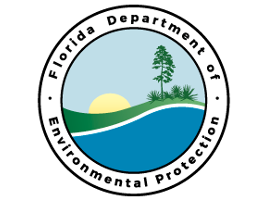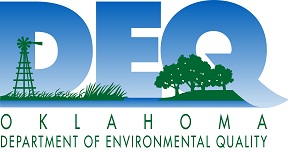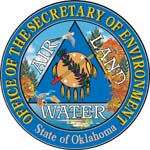
The Environmental Protection Agency (EPA) is an independent executive agency of the United States federal government tasked with environmental protection matters. President Richard Nixon proposed the establishment of EPA on July 9, 1970; it began operation on December 2, 1970, after Nixon signed an executive order. The order establishing the EPA was ratified by committee hearings in the House and Senate. The agency is led by its administrator, who is appointed by the president and approved by the Senate. The current Administrator is Michael S. Regan. The EPA is not a Cabinet department, but the administrator is normally given cabinet rank.

United States environmental law concerns legal standards to protect human health and improve the natural environment of the United States. While subject to criticism at home and abroad on issues of protection, enforcement, and over-regulation, the country remains an important source of environmental legal expertise and experience.

The New York State Department of Environmental Conservation is a department of New York state government. The department guides and regulates the conservation, improvement, and protection of New York's natural resources; manages Forest Preserve lands in the Adirondack and Catskill parks, state forest lands, and wildlife management areas; regulates sport fishing, hunting and trapping; and enforces the state's environmental laws and regulations. Its regulations are compiled in Title 6 of the New York Codes, Rules and Regulations. It was founded in 1970, replacing the Conservation Department. and is headed by Basil Seggos.
The Washington State Department of Ecology, or simply Ecology, is an environmental regulatory agency for the state of Washington. The department administers laws and regulations pertaining to the areas of water quality, water rights and water resources, shoreline management, toxics clean-up, nuclear waste, hazardous waste, and air quality. It also conducts monitoring and scientific assessments.

The Illinois Environmental Protection Agency of the state of Illinois is the primary body concerned with the protection of the environment for the state. The Illinois EPA's mission is "to safeguard environmental quality, consistent with the social and economic needs of the State, so as to protect health, welfare, property and the quality of life."

The California Department of Toxic Substances Control is an agency of the government of the state of California. The mission of the DTSC is to protect public health and the environment from toxic harm. DTSC is part of the California Environmental Protection Agency (Cal/EPA), has more than one thousand employees, and is headquartered in Sacramento. DTSC also has a number of regional offices across the state including two environmental chemistry laboratories, and field offices in Sacramento, Berkeley, Los Angeles, Chatsworth, Commerce, Cypress, Clovis (Fresno), San Diego and Calexico.

The Ministry of Ecology and Environment, formerly the Ministry of Environmental Protection of the People's Republic of China (MEP), and prior to 2008 known as the State Environmental Protection Administration (SEPA), is a department of the State Council of the People's Republic of China. It superseded the MEP in 2018.
The Michigan Department of Environment, Great Lakes, and Energy (EGLE), formerly Michigan Department of Environmental Quality, is a principal department of the U.S. state of Michigan for environmental issues. The department was created in 1995.

The Florida Department of Environmental Protection (FDEP) is the Florida government agency charged with environmental protection.

Water testing is a broad description for various procedures used to analyze water quality. Millions of water quality tests are carried out daily to fulfill regulatory requirements and to maintain safety.

The Oklahoma Department of Environmental Quality (DEQ) is a department of the government of Oklahoma under the Governor of Oklahoma. It is responsible for protecting human health and for safeguarding the natural environment: air, water, and land. DEQ is chiefly responsible for the environmental policy of Oklahoma. It is governed by a thirteen member Environmental Quality Board appointed by the Governor, which in turn appoints an Executive Director to administer the Department.
The Tulane Environmental Law Clinic (TELC) is a legal clinic that Tulane Law School has operated since 1989 to offer law students the practical experience of representing real clients in actual legal proceedings under state and federal environmental laws.

The Oregon PHL/DEQ Laboratories are the Oregon Department of Environmental Quality (DEQ) and Oregon Department of Human Services (DHS) laboratories located in a single building in Hillsboro, Oregon, United States. DHS operates the Oregon State Public Health Laboratory (OSPHL), and the DEQ operates their Laboratory and Environmental Assessment Division at the site. The laboratories previously were located at Portland State University, moving to the new location near Cornelius Pass Road and the Sunset Highway in northeast Hillsboro in 2007.

The Office of Enforcement and Compliance Assurance (OECA) is the law enforcement arm of the United States Environmental Protection Agency (EPA). It is made up of attorneys, special agents, scientists and other employees.

The Alabama Department of Environmental Management (ADEM) is a state government agency charged with the enforcement of environmental policy in the U.S. state of Alabama. It is authorized to adopt and enforce rules and regulations consistent with the statutory authority granted to the Alabama Environmental Management Commission and ADEM by the United States Environmental Protection Agency (EPA). It was created in 1982 with the passage of the Alabama Environmental Management Act by the Alabama Legislature. The act consolidated the various commissions, agencies, and programs that had been responsible for implementing environmental law into the Alabama Environmental Management Commission and ADEM. In past years, the agency has been repeatedly accused of not enforcing environmental regulations.

The Oklahoma Secretary of Environment is a member of the Oklahoma Governor's Cabinet. The Secretary is appointed by the Governor, with the consent of the Oklahoma Senate, to serve at the pleasure of the Governor. The Secretary serves as the chief advisor to the Governor on environmental policy development and implementation.
The Oregon State Sanitary Authority (OSSA) was the first agency in the U.S. state of Oregon that was charged with protecting the environment. In 1938, Oregon voters, by a three-to-one margin, approved an initiative to regulate water pollution and to create an enforcement agency under the jurisdiction of the Oregon State Board of Health. Political pressure that led to the initiative had begun as early as the 1920s, when the Board of Health, the U.S. Public Health Service, the Izaak Walton League, and others had expressed concerns about water pollution and its threats to human health. Pollution had caused many fish kills on the Willamette River in the 1920s, and Portland, on the lower river, had often closed its part of the Willamette to swimming because of sewage in the water.
The Wyoming Department of Environmental Quality (DEQ) founded in 1973, is a Wyoming state agency to protect, conserve and enhance the environment of Wyoming "through a combination of monitoring, permitting, inspection, enforcement and restoration/remediation activities". It consists of 6 divisions and since 1992, the Environmental Quality Council (EQC), a separate operating agency of 7 governor-appointed members.
Water in Arkansas is an important issue encompassing the conservation, protection, management, distribution and use of the water resource in the state. Arkansas contains a mixture of groundwater and surface water, with a variety of state and federal agencies responsible for the regulation of the water resource. In accordance with agency rules, state, and federal law, the state's water treatment facilities utilize engineering, chemistry, science and technology to treat raw water from the environment to potable water standards and distribute it through water mains to homes, farms, business and industrial customers. Following use, wastewater is collected in collection and conveyance systems, decentralized sewer systems or septic tanks and treated in accordance with regulations at publicly owned treatment works (POTWs) before being discharged to the environment.
The Environmental Health Divisions was a unit of the U.S. Public Health Service (PHS) that focused on environmental health. It existed in various forms from 1913 until 1970, and had several other names earlier in its history, including the Office of Stream Pollution Investigations and Division of Sanitary Engineering Services. It is the primary direct predecessor of the U.S. Environmental Protection Agency.













